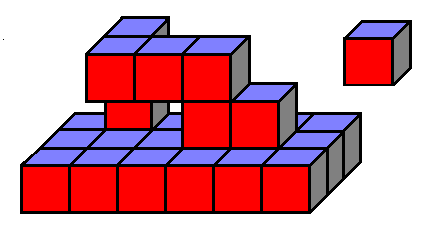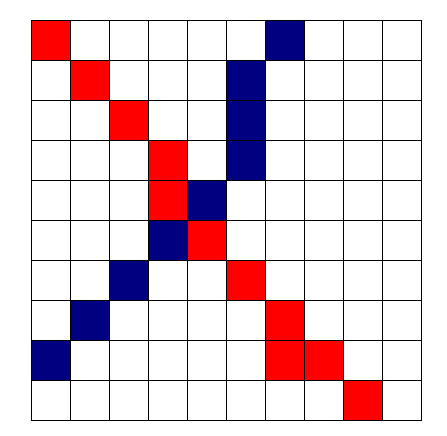
Ignoring the larger component (let's call it A) and focusing on the smaller one only (we call it the component B), its inverse background object B will have the topology of a hollow sphere, i.e. a sphere with one single cavity.
On the other hand, the inverse background object of A, i.e. A, has one cavity, which contains one handle. This handle is constitued by the background voxels located within the handle of the initial object A. As a consequence, the topology of the background object O is the one of a sphere with two cavities, one of which contains a handle.
This simple example illustrates the duality existing between the topology of the foreground and backround objects, especially the connection:
handle in X <--> handle in X,
cavity in X <--> disconnected component in X.
